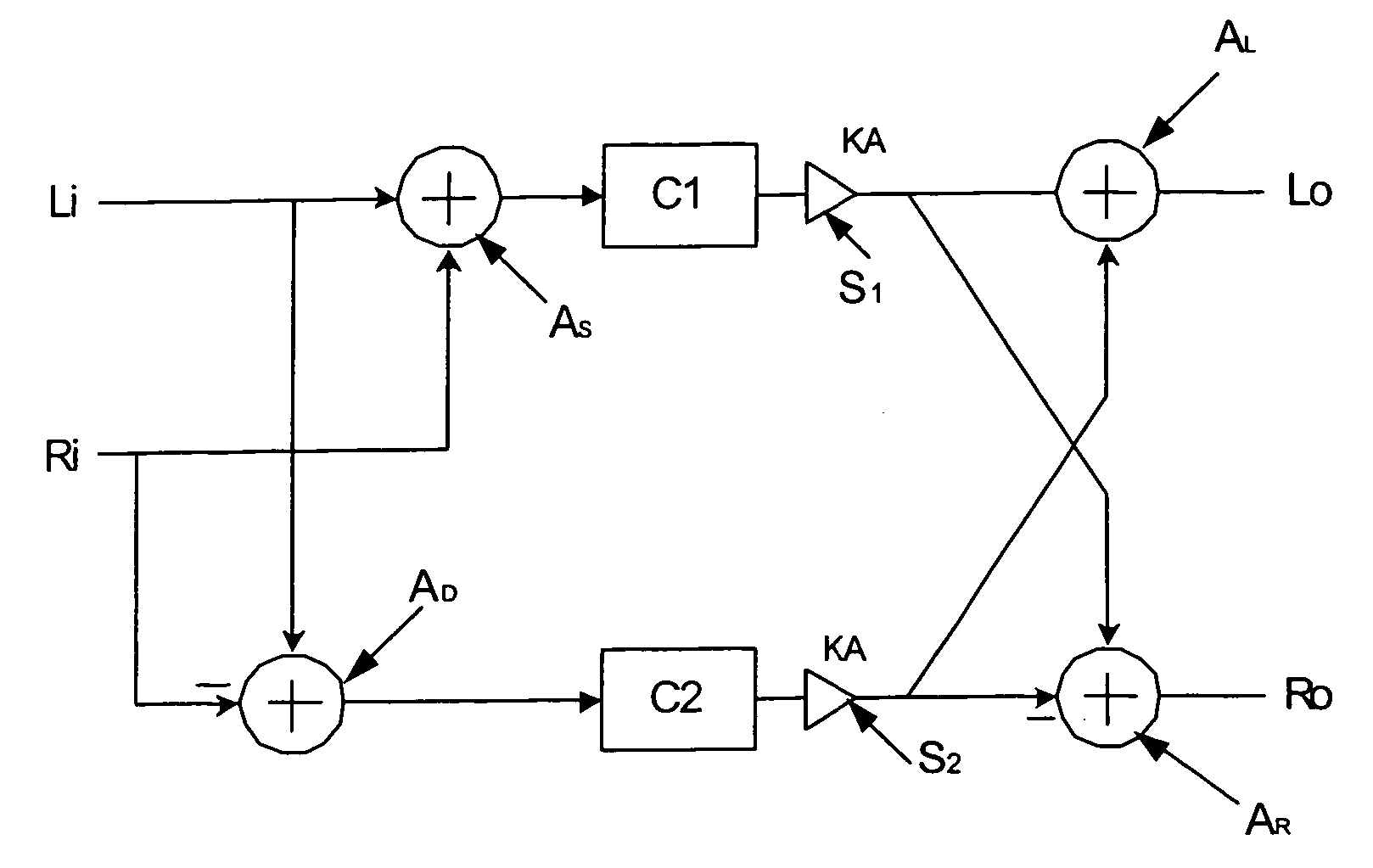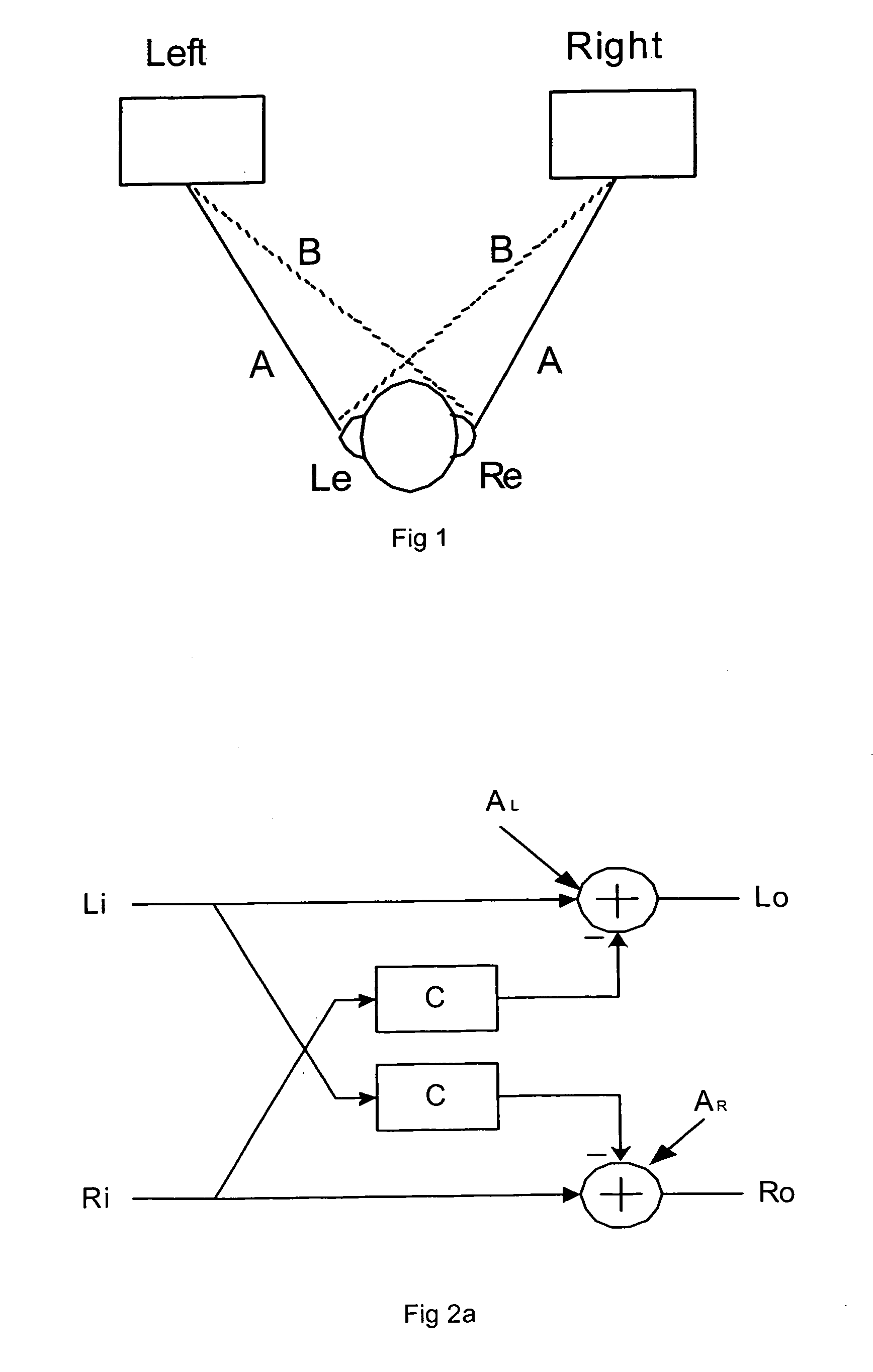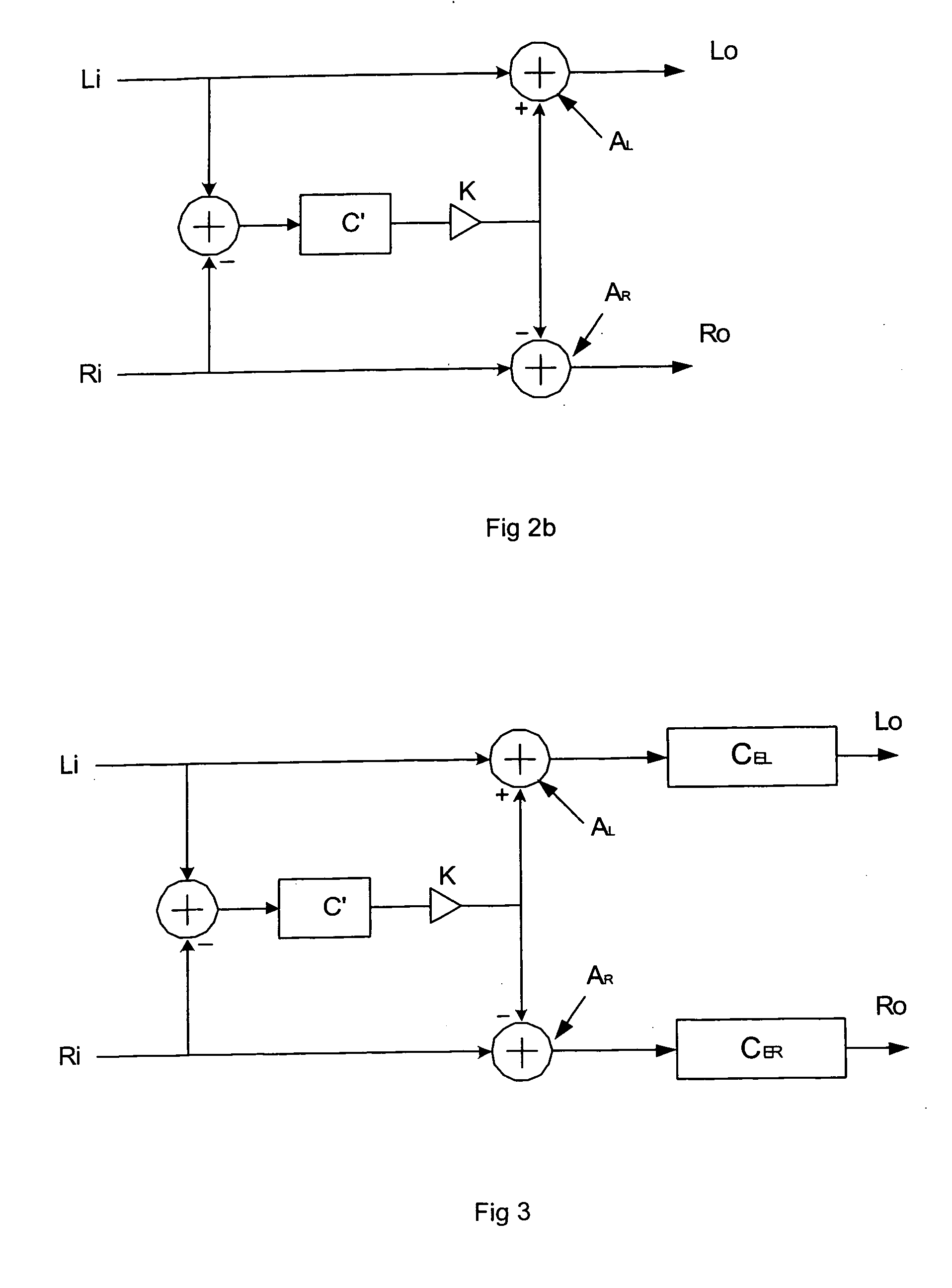Audio processing
a technology of audio signal and processing, applied in the direction of stereophonic arrangments, transducer details, electrical transducers, etc., can solve the problems of reducing the filter count, reducing the filter headroom requirement, and avoiding overload, so as to reduce hardware cost and complexity, reduce the filter count, and reduce the cost
- Summary
- Abstract
- Description
- Claims
- Application Information
AI Technical Summary
Benefits of technology
Problems solved by technology
Method used
Image
Examples
Embodiment Construction
[0028]FIG. 4 shows an equaliser arrangement according to an embodiment. The equaliser has two inputs for receiving a left channel signal Li and a right channel signal Ri. The two input signal paths Li and Ri are coupled to an adder AS which sums the input signals to provide a sum signal (Li+Ri). These are then applied to a first or sum filter C1, and then to a scaling unit S1 which has a gain value of KA. When KA=0.5 it halves the amplitude of the signal output from the first filter C1. The two input paths Li and Ri are also coupled to a subtractor AD which provides a difference signal (Li−Ri) to a second filter C2. The output of the second filter C2 is coupled to a second scaling unit S2 also having a gain of KA, say 0.5. A second adder AL adds the processed difference signal from S2 (KA.C2.(Li−Ri)) to the processed sum signal from S1 (KA.C1.(Li+Ri)) to provide a left channel output signal Lo. A second subtractor AR subtracts the processed difference signal from S2 from the process...
PUM
 Login to View More
Login to View More Abstract
Description
Claims
Application Information
 Login to View More
Login to View More - R&D
- Intellectual Property
- Life Sciences
- Materials
- Tech Scout
- Unparalleled Data Quality
- Higher Quality Content
- 60% Fewer Hallucinations
Browse by: Latest US Patents, China's latest patents, Technical Efficacy Thesaurus, Application Domain, Technology Topic, Popular Technical Reports.
© 2025 PatSnap. All rights reserved.Legal|Privacy policy|Modern Slavery Act Transparency Statement|Sitemap|About US| Contact US: help@patsnap.com



